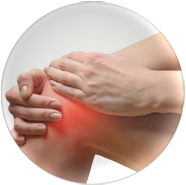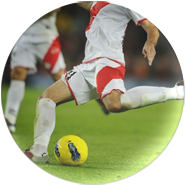Osteoarthritis
A normal healthy joint consists two articulating bones each covered with a smooth hard layer of cartilage. Between the cartilage is a viscous liquid called synovial fluid which provides near frictionless movement. As all joints age the cartilage becomes thinner and the quality of synovial fluid diminishes. This process is known as osteoarthritis and can be accelerated following injuries.
Symptoms consist of joint pain, stiffness and crepitus. These symptoms are worse with activity and often diminish at rest although following exacerbations can remain painful. Treatment involves encouraging activity which promotes joint health. Painkillers are useful to this end and repeat cortisone injections can provide longer term pain relief. A synthetic form of synovial fluid known as hyaluronic acid can also be injected and has fewer side effects than cortisone. Ultimately when a joint no longer responds to treatment joint replacement surgery can be undertaken; hips, knees and shoulder replacements are the most common and successful of these.



